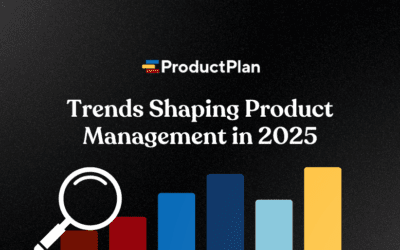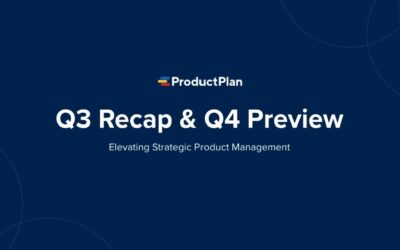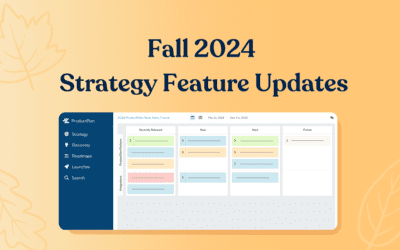When plotting out our product’s trajectory, there’s a constant tension between two competing mindsets. On the one hand, there’s the “go-big-or-go-home” moonshot approach. Where charismatic leaders rally the troops around an ambitious vision with a massive potential payoff. These high-risk gambits get praised when they succeed and pilloried when they fail.
Meanwhile, the slow, steady drumbeat of cautious experimentation and incremental enhancements always makes the product better. However, they don’t fundamentally shake things up much. It’s not sexy and won’t land the leadership team any TED Talks. Yet the customer experience continually improves while KPI targets come into view.
Some might think an organization must be all-in on one of these philosophies. How can you justify redirecting resources to tweaking the UX or integrating an API when they could spend time building the next big thing? Alternatively, how can we let our current customers suffer and miss out on easy wins just to chase after something that might not even work and won’t generate meaningful revenue for years?
Big bets have big payoffs, but there’s a reason it’s called gambling
In the venture capital world, the prevailing strategy is to invest in multiple companies knowing that many will fail. But when one of them hits it big, it makes up for the 75% that fail to deliver a return.
This portfolio approach is baked into everything VCs do. They raise enough capital to spread their cash across a diverse enough collection of businesses. This way, they can weather the risk and wait around for their eventual payday. But your company isn’t a VC, even if some back it. You don’t have the cash to take so many risks or the runway to see which might eventually pan out.
This means you’ve only got so many swings at the plate to get a big bet right. So you want to make those chances count. That means doing your homework regarding market intelligence, product-market fit, technical feasibility, and the like.
But it also sets the stage for a parallel strategy that doesn’t sacrifice short-term wins. The team can still make minor changes and improvements that boost adoption, revenue, and retention while still pursuing big bets.
How can these things happen in parallel without chaos ensuing? Here are the four ingredients you need.
A clear product vision
Every business and product needs a vision to guide everything that follows, from strategy to staffing to roadmaps. Taking a bifurcated approach to product development and innovation is more vital than ever.
The product vision defines where the business wants the product to be. The planning and tactics are set against that vision. This maintains focus and prevents shiny objects of all shapes and sizes from stealing the stoplight.
A shared vision ensures that every project aligns with the vision. Whenever prioritization occurs, the prevailing vision provides only relevant, contributing items that rank highly.
Connect Product Strategy to Execution in ProductPlan >
Stakeholder alignment
Stakeholders must buy into this strategy to push incremental value while working on more extensive initiatives. Inevitably, some influential voices will want to reach for the stars and not worry about the short-term—founders and CEOs often fall into this bucket—while others will lobby for projects that solve immediate pain points for current and prospective customers in the interest of keeping those folks happy, closing deals, and easing pressure on customer service.
Both sides have valid arguments for why the company should focus on its primary areas of concern. But instead of picking one path or another, organizations can take a “yes, and” approach by working on both initiatives.
This means you can’t chase as many big bets simultaneously nor knock out short-term wins as quickly as possible if the team was 100% focused on one or the other. But this strategy still addresses the here and now while working toward future growth and expansion.
Explaining the benefits of this parallel approach and winning over holdouts is critical to establishing and maintaining stakeholder support, which trickles down to the rest of the staff. You can even work to get broad-based commitment to spending a specific percentage of product development resources on big bets, which should comprise at least 20% of the overall budget.
But beyond resource allocation, stakeholders must also embrace this approach’s inevitable risks and failures. Not all those big bets will work out, and those failures should be commended as learning opportunities rather than blame sessions.
Idea management
Since your business worries about the short-term and the big picture, there are more ideas than ever to consider. Keeping track of them all, ensuring they’re given proper consideration, and closing the feedback loop with the folks who make suggestions is essential and falls on the product team to manage.
As ideas come in and are periodically reviewed, they should be slotted into the appropriate track (big bet or short-term win) and then prioritized against currently ranked projects and other potential candidates. Once an idea gets rejected, put in the backlog, or slotted into a roadmap, whoever suggested it should be informed so they know their idea was taken seriously and followed up on.
And remember, today’s bad idea might not look so terrible next month or next year, so don’t be too quick to dismiss them immediately out of hand. Building up a deep backlog of quality ideas that could be pursued under the right conditions is never a thing.
An end-to-end product management platform
When an organization adopts a balanced product development approach, roadmapping, resource management, and launch planning get more complicated, and each phase requires something different from product management. But, with the right processes and tools in place, a lot of the heavy lifting and finicky fussing gets handled for you for every stage of the product management process.
Take a tour of ProductPlan’s end-to-end product management platform >
Prioritization
There’s no shortage of frameworks to help you and your colleagues sort, rank, and evaluate potential projects, but with an end-to-end product management platform, you can do it all right in one place. From capturing ideas to deciding which ones make the cut for the next release, you can tame your backlog and elevate winning ideas before slotting them into your product roadmaps.
Be sure to evaluate and prioritize big bets separately from more incremental enhancements. You want an apples-to-apples ranking process that clearly delineates selecting a risky moonshot from debating which minor UX improvements to take on next.
Roadmapping
When adopting a balanced product strategy, product roadmaps are more crucial than ever to communicate essential information to stakeholders, colleagues, external partners, and customers. Given these roadmaps’ complex and interdependent nature, trying to manage them in a spreadsheet or slide deck is a disaster.
You need visual, theme-based roadmaps that convey the big ideas with the option to drill down into the details. With customized views, portfolio rollups, and a cloud-based viewer, you’ll always know everyone’s looking at the most accurate version. And each audience will get the specific level of detail and granularity they need.
It also provides more visual ways to ensure your roadmap has the right balance between big bets and incremental gains and differentiates between the lengthier timelines big bets demand and the rapid-fire short-term wins that get cranked out on the regular.
With a purpose-built product management solution, the product team can spend less time futzing around with formatting and version control. Instead, they can focus on understanding their market and talking with customers to turn feedback and findings into actionable insights. And the audience for these roadmaps gets consistent output across the product portfolio.
Launch Management
Executing a successful product launch requires a ton of collaboration and coordination to ensure all the messaging, deliverables, and events convey the appropriate talking points and value propositions for the product. And since different releases will have different goals—short-term win messaging will focus on current users and prospects, while big bets require much more fanfare and a broader push to attract new audiences.
Much of the planning, tracking, and communication around a launch can be streamlined and centralized with the right product management tool. Deadlines and progress are visible to everyone. Status reports are handled by the software, freeing up launch team members to spend more time actually doing the work. Best of all, because everything’s on the same platform, the launch plan and roadmap are connected and integrated. So you can pull elements out of the roadmap and directly into launch planning.
Keep your balancing act in balance
Most businesses that achieve sustained success pursue both paths simultaneously. They navigate the tricky terrain to keep adding value bit by bit while also chasing more elusive and substantial objectives. They can keep the lights on while still dreaming big by finding a formula that works for them. Each business has a unique situation. Funding, cash management, customer and contractual obligations, and the risk appetite of investors, the board, and senior leadership.
Adopting this strategy might also be the winning formula for your product. But attempting to orchestrate all those moving pieces without the right tools in your product stack will be difficult.




